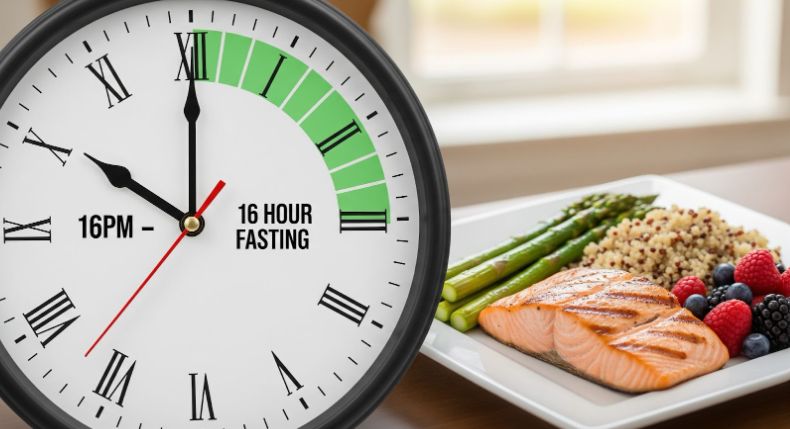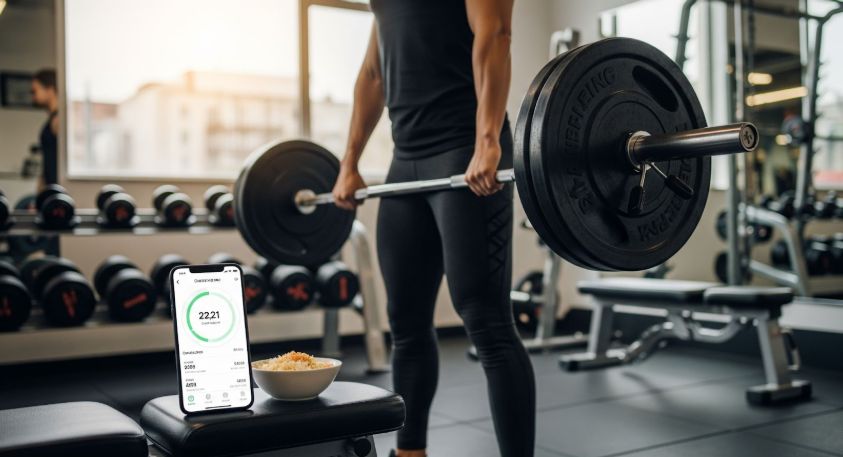
I still remember the first time I really started taking my diet seriously. It wasn’t just about losing fat—it was about feeling good, having more energy, and performing better, both in the gym and on the field.
I tried a bunch of different things along the way, but three diets kept popping up over and over: Ketogenic, Intermittent Fasting, and Carb Cycling. Each of these has its unique benefits, but finding the right one—or a combination of all three—was the real game-changer for me.
So, if you’re looking to lose fat, build muscle, and get in the best shape of your life, let’s break down the best diet plan for you.
I’ll cover what each one entails, how it works, and how you can use them to get the results you’ve been dreaming about. Trust me—this isn’t just theory, these methods actually work.
What Is the Ketogenic Diet, and Why Is It So Effective?

The Ketogenic Diet is all about dramatically reducing carbs and increasing healthy fats. The goal here is to get your body into a state of ketosis, where it burns fat for fuel instead of carbs. Think of it as switching from running on gasoline (carbs) to running on diesel (fat).
When you restrict carbs, your liver starts producing ketones, which are molecules that fuel your body’s energy needs. This is when the magic happens: your body becomes a fat-burning machine.
Instead of relying on glycogen (the energy stored from carbs), it taps into stored fat to keep things running. This is one reason why ketosis is so effective for fat loss.
The key to success on a keto diet is balancing your macronutrients. Typically, the breakdown looks something like this:
- 70-80% fat
- 10-20% protein
- 5-10% carbs
As a rule of thumb, you’ll want to eat a lot of healthy fats like avocado, olive oil, and fatty fish, with moderate protein like chicken or eggs. Carbs will mostly come from leafy greens and low-carb vegetables.
Over time, your body becomes more efficient at burning fat for fuel, which leads to sustainable fat loss without feeling hungry all the time.
What Is Intermittent Fasting and How Can It Boost Your Fat Loss?

Intermittent Fasting (IF) has become increasingly popular, and for good reason. Unlike traditional diets, IF focuses on when you eat rather than what you eat.
The most common form is the 16/8 method, where you fast for 16 hours and eat within an 8-hour window. During the fasting period, you consume only water, black coffee, or herbal tea—no food.
Why is IF effective? During fasting, your body taps into fat stores for energy instead of using food. But there’s more. Fasting also helps regulate insulin levels and gives your body time to repair itself. Plus, during the fasting period, your body produces more growth hormone, which supports fat loss and muscle growth.
Another benefit is that it gives you a break from the constant need to plan meals and snacks. For me, it simplified my eating habits and made it easier to stay on track with fat loss. Instead of focusing on what I was eating every hour, I could focus on bigger, healthier meals during my eating window.
What Is Carb Cycling, and How Does It Help You Build Muscle?

Carb Cycling is exactly what it sounds like: you alternate between high-carb and low-carb days. It’s a strategy I love because it helps maximize fat loss while ensuring that you have enough energy to build and maintain muscle.
Here’s how it works:
- High-carb days: These are typically on training days when you need the extra fuel for energy. You replenish your glycogen stores to fuel intense workouts.
- Low-carb days: On rest days or low-activity days, you reduce carbs and increase fat intake to keep your body in fat-burning mode.
The beauty of carb cycling is that you get the benefits of fat loss while also supporting muscle gain. On high-carb days, you’re refueling and supporting muscle recovery. On low-carb days, you’re burning fat without compromising muscle mass. It’s like the best of both worlds.
How to Combine Ketogenic Diet, Intermittent Fasting, and Carb Cycling
You might be thinking, “Can I combine all three of these methods for even better results?” The answer is yes, and many people do. Here’s how I personally combine these strategies for maximum effectiveness:
1. Intermittent Fasting as the Framework
Start by implementing intermittent fasting. I use the 16/8 method, where I fast from 8 PM to 12 PM the next day. This gives me a nice, consistent fasting period where I’m not thinking about food all the time. During my eating window, I focus on nutrient-dense meals.
2. Ketogenic Diet on Low-Carb Days
On my low-carb days (usually during rest days), I follow a ketogenic diet. This helps me stay in fat-burning mode and promotes fat adaptation, which helps me burn fat more efficiently during workouts.
3. Carb Cycling on Training Days
On my training days (typically 3-4 days a week), I have a high-carb day. This ensures that I’ve got plenty of fuel for intense workouts, helping me lift heavier, train harder, and recover faster. After these high-carb days, I switch back to low-carb or keto days to keep the fat burning going.
This combination helps me get the most out of each method—fast fat loss with intermittent fasting, energy and muscle recovery with carb cycling, and sustained fat-burning with ketosis.
FAQ: Best Diet Plan for Fat Loss
1. Can I lose fat with intermittent fasting alone?
Yes! Intermittent fasting can be an incredibly effective tool for fat loss. By reducing your eating window, you naturally reduce your calorie intake, which leads to fat loss. Plus, fasting helps improve insulin sensitivity and increases fat-burning hormones.
2. Do I need to exercise while following the ketogenic diet?
While you don’t have to exercise on a ketogenic diet, combining it with resistance training or cardio will maximize your fat loss and muscle retention. The keto diet helps you burn fat for fuel, and exercise helps maintain or increase muscle mass.
3. What’s the best way to start carb cycling?
Start by identifying your training days and non-training days. On training days, you’ll want to have higher carbs to fuel your workouts, and on non-training days, you’ll focus on low-carb or keto to keep burning fat. Keep track of how your body responds, and adjust based on your energy needs.
4. Can I combine all three—keto, intermittent fasting, and carb cycling?
Absolutely! Combining intermittent fasting, keto, and carb cycling can be highly effective for fat loss and muscle gain. The key is to find a schedule that works for your lifestyle and goals. You’ll fast for 16 hours, follow keto on low-carb days, and enjoy higher carbs on training days.
The Ultimate Combo for Success
When it comes to fat loss and muscle gain, there’s no one-size-fits-all solution. But by combining intermittent fasting, the ketogenic diet, and carb cycling, you can create a powerhouse strategy.
It will work with your body’s natural rhythms and help you make progress towards your goals. Whether you’re looking to shed fat, build muscle, or maintain a lean physique, these three methods provide a flexible, sustainable approach.
Remember, consistency is key. It’s not about a quick fix—it’s about long-term, sustainable results. Stick with it, adjust as needed, and you’ll see the transformation unfold. Happy training!


